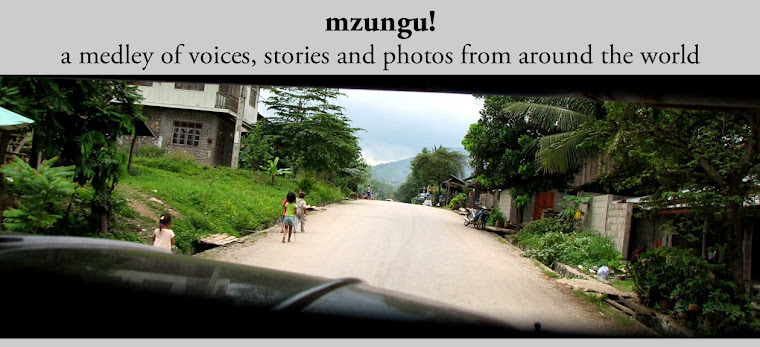 Whistles blow, feet stomp, and an old woman jumps high into the air as a group of Karamoja people gather for a traditional dance in northeastern Uganda. Central to the atmosphere of the energetic circle are colorful beads gracing every waist, forehead, arm, and neck. In Karamoja, beads are beauty. Beads are tradition. And for Safia Nakwang, beads are livelihood.
Whistles blow, feet stomp, and an old woman jumps high into the air as a group of Karamoja people gather for a traditional dance in northeastern Uganda. Central to the atmosphere of the energetic circle are colorful beads gracing every waist, forehead, arm, and neck. In Karamoja, beads are beauty. Beads are tradition. And for Safia Nakwang, beads are livelihood.Nakwang runs a beading shop in Kotido, where she has lived for more than 15 years after moving from Kaabong. She cannot remember when she first started beading, but says she learned it growing up. “It’s my life,” she says. “I just know it. It is a traditional thing. All young warriors how to make beads.” Villagers buy plain beads from her, but town people who don’t know how to sew the beads buy her finished products.
Nakwang’s daughter, Arupei Hindy, is eight years old and walks to her mother’s bead shop after school to make a few items. She started making the beads about a year ago and already knows many designs. Although she
 doesn’t get paid for her work, her beads that are sold help provide books and food for her and her siblings. “This is what they eat,” Nakwang says metaphorically.
doesn’t get paid for her work, her beads that are sold help provide books and food for her and her siblings. “This is what they eat,” Nakwang says metaphorically.The small shop is full of colourful necklaces, waistbands, earrings, headpieces, tablemats, and other items all carefully made from small seed beads imported from Kenya or Mbale and often sold by Somalis. When business is busy, Nakwang can hire up to 20 people, but when it is slow, she can only afford three to five beaders. Nakwang’s profit follows the seasons and provides for her, her seven children, and eight children from her deceased co-wife. “When hunger is there, nobody buys,” she says. And this year, there is hunger.
To design the beads, Nakwang says she looks for colours that match and patterns that prove popular. “It’s about just being creative. If I put this and that, it will be good,” she says as she points to a bag full of beads. If people buy a particular pattern, she makes more of it.
Some belts feature the colours of Uganda, with vibrant black, yellow and red stripes. Other belts have the black, red and green of Kenya or the red, white and black of Egypt. One large belt even features green, yellow and black with “Jamaika” spelled out in large letters.
Different tribes and clans have their own particular methods of making the bead products. The Dodoth sew the beads onto materials like plastic from jerry cans or Blue Band tubs. The Jie tend to make designs in loose strands. Some tribes form triangle patterns, while others prefer stripes.
Most people in Karamoja wear beads—at least small waist strands—every day. “Even on newborn babies they put some lines,” says Nakwang. “They cannot carry a child without the beads.” When girls are 14 or 15, she says they start wearing beads to attract men so that “the man with cows will come and carry her.”
 For special occasions like weddings and dances, individuals wear a full set of beads, which includes earrings, a double necklace and a single small necklace, a head piece, a wide belt, single waist strands in solid colours, arm bands above the elbow, and leg bands on the ankle or calf.
For special occasions like weddings and dances, individuals wear a full set of beads, which includes earrings, a double necklace and a single small necklace, a head piece, a wide belt, single waist strands in solid colours, arm bands above the elbow, and leg bands on the ankle or calf.Making the items can be quite time-consuming. Nakwang says a wide waist belt can take up to four whole days, with an entire day spent pricking the plastic bits that separate bead sections. “This work is difficult,” she says. “If you’re in a group, the work is easier. But when you’re alone, it’s tiresome.”
But the long hours pay off when dancers don the beads and display their skills. These beautiful beads capture the essence of a vibrant and proud tradition.



No comments:
Post a Comment